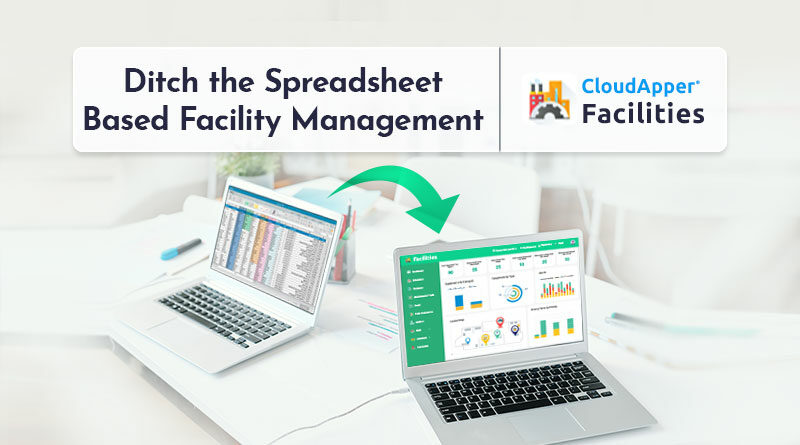Is it Time to Ditch the Spreadsheet Based Facility Management?
Spreadsheets are a regular thing in most property and facility management offices, where they’re used to keep track of tenants, vendors, inspections, and compliance, and more. However, it may be time to abandon these dinosaurs and move from spreadsheet-based facility management to a record-keeping system or software designed specifically for property management and more conducive to analysis, collaboration, and clarity.
Each week, plenty of events occur, ranging from unit inspections and asset maintenance to new compliance violations and filing deadlines. A record-keeping system that demonstrates this ever-changing environment is required to capture these events, analyze them, and spot trends that can notify your management strategy.
It must take into account historical data, limit time spent inputting data, and provide you with real-time information, which is nearly impossible with traditional spreadsheets.
Let’s take a look at some of the most common spreadsheet issues of property management professionals.
#1 – To Err is Human
The accuracy of a spreadsheet is frequently dependent on the accuracy of the human inputting the data. We’d all like to think we’re perfect, but unfortunately, we’re not. If we were, America’s Funniest Home Videos would never have seen the level of success that it did.
Small data errors in property management can result in huge costs. If you type in a property violation’s correction due date as 03/01/21 when it’s actually 02/01/21, you could face large fines for the mistake. These all-too-common mistakes can skew your analysis, resulting in misguided strategies and action plans.
#2 – Who’s on First?
After you run an excel report, it is frequently sent out and saved by multiple parties. They then add their own information to their version.
When the time comes to request that report, you may have 5 different versions, each telling a different story. Deciphering which workbook is the most recent.
Due to the lack of a centralized truth, collaboration among facility management professionals is difficult. They all start with a different set of assumptions and knowledge about the organization and its property. Facility managers require accurate and up-to-date records. There should be no more squandering time in email chains and folders while looking for the “correct file.”
#3 – You’re Chained To Your Desk
Facilities managers spend a significant amount of time moving around their properties, assigning follow-up work, noting problems, conducting inspections, and so on. It can be hard and inconvenient to locate these critical data records if they are hidden in a large spreadsheet.
How often have you thought about a recent compliance inspection on your way home, for example? “Hmm, did we hire a vendor to remediate?” you might be wondering. “Weren’t they supposed to come on Monday?”
You should be able to pull up this answer in ten seconds rather than logging onto your laptop and laboriously searching through the tiny columns and rows for the answer. Another reason why many property managers are turning to mobile-option operations software is this.
#4 – Get Trendy
Static records, such as locally -hosted spreadsheets or paper documents, provide a limited piece of the puzzle. To gain clarity on trends and opportunities to improve your facility management, you’ll need to devote time and effort to put that puzzle together.
Excel spreadsheet analysis, on the other hand, has a steep learning curve. You’ll need to learn how to use formulas, macros, and data analysis. And that takes time, especially for facility managers who have new assignments flapping into their to-do lists like hungry seagulls every hour.
Furthermore, spreadsheets lack historical data, even if you have analytical skills. In most cases, records are updated in the cell. Past information is replaced and lost, making detecting trends over time nearly impossible.
And trending data is how you can see if your new daily rounds are resulting in fewer tenant complaints or if your new condenser is causing HVAC breakdowns. Essentially, trend-spotting is one of the most effective methods for finding ways to improve your facility’s operations.
So – Should You Make The Break?
Let us assist you in determining whether abandoning spreadsheets in pursuit of a facility management software platform is the best option for you. Consider getting rid of spreadsheets if you:
- Have a lot of data to track and analyze: If you have data coming in from multiple sources, you will waste a lot of time on data entry. Furthermore, there will be more opportunities for error. When it comes to software platforms, you can make a change once and it will be applied universally
- You always spend much time in the field: A mobile-friendly app will allow you to quickly find the information you need while you’re away from your desk.
- Want to improve Team Collaboration: Effective property management requires teamwork, especially when scaling your business. Collaborating with spreadsheets, on the other hand, can be perplexing and limiting.
- Do not want to learn advanced Excel because you want your team members, not just the excel wizards, to be able to evaluate the health of your properties and spot trends.
Turn Data into Actionable Insights with Virology
CloudApper Facilities is designed specifically for facility managers who want to keep organized records, easily discover hidden trends and truths, and act on these findings to improve the effectiveness of their facility operations.
The platform, which is powered by no-code architecture, can be easily customized to manage the workflow of your entire team, analyzing the resulting data in real-time to piece together a cohesive picture of your facility operations, whether it is building compliance projects, asset management/maintenance, or daily rounds.











